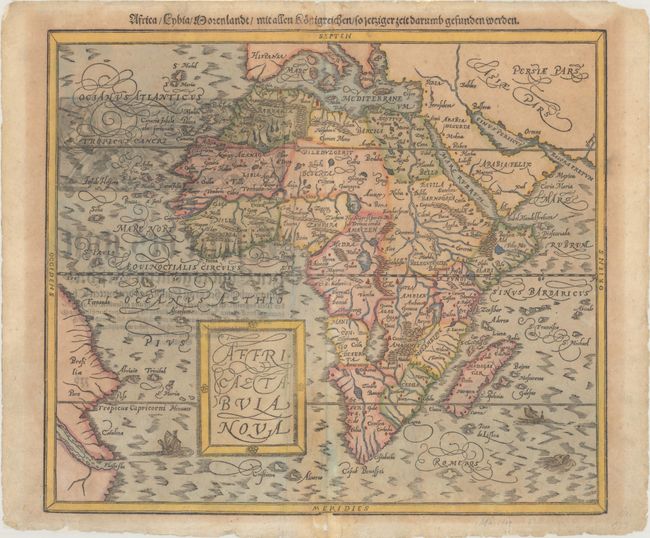Catalog Archive


Auction 196, Lot 657
"Affricae Tabula, Nova", Munster/Petri

Subject: Africa
Period: 1598 (circa)
Publication: Cosmographey: das ist, Beschreibung Aller Länder
Color: Hand Color
Size:
14.2 x 12.3 inches
36.1 x 31.2 cm
Download High Resolution Image
(or just click on image to launch the Zoom viewer)
(or just click on image to launch the Zoom viewer)